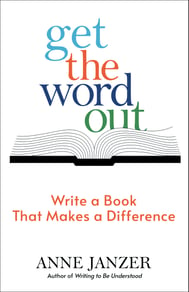Ever since I was a child, I dreamed of writing a book. When I was younger, I wanted to write fiction, like the authors I read. As I grew older and my reading tastes changed, I leaned toward nonfiction.
So I waited for a book idea to arrive, fully formed. I waited… and waited ...
The perfect book idea never showed up.
Inspiration doesn’t drop in unannounced. We have to work with our ideas before they become something bigger. We need to muck around in the words and concepts before we can make meaningful connections—like bakers knead dough before it becomes bread.
For many people, myself included, the act of writing activates the deep thought I need for creative pursuits. That’s where a specific form of journaling—directed freewriting—comes into my story.
After years of waiting, I identified a topic and set myself a challenge: I would capture 1000 words a day on the topic until I had 20,000 words. At that point, I’d figure out if I had enough ideas to form a book.
I created a file on my computer, and every day I showed up to fill it with thoughts on my book topic. I typed fluidly and quickly, without judging or assessing the results. Coming up with 1000 words, day after day, pushed me to examine everything I knew and figure out what else I might want to explore. It made me think deeply.
About 10 days into the process, the theme and structure of the book revealed itself. I was ready to write an outline and a proposal. (The resulting book, Subscription Marketing, is now in its third edition, and I have written four books since.)
Those first 10,000 words didn’t end up in the final book. But that experience did more than simply jump-start the first book. It gave me lasting insight into using freewriting in my writing process.
Freewriting vs. Journaling
Freewriting, as I practice it, is like journaling with a specific topic and purpose. It’s more of a planned hike than a ramble through the woods, but enjoyable nonetheless.
Directed freewriting gathers thoughts and ideas on a specific topic. It’s a powerful writing tool. You can use it to put yourself in the reader’s shoes (invoking cognitive empathy), to test the limits of your understanding and knowledge and identify necessary research, or to explore creative connections to your topic.
Put simply, freewriting is the inner research that informs and feeds your writing for others.
How to Approach Freewriting
Here’s how you can put freewriting to work for your own writing tasks.
Choose the subject you want to write about—anything from a letter to your boss about an important project to a blog post or a chapter of a book. No matter how mundane, every subject can benefit from deep thought and creativity.
Create a file (online or paper) and name it freewriting or early thoughts or whatever convinces you that this is temporary. The novelist David Foster Wallace labeled files of his explorations as zero drafts as opposed to first drafts. The label matters, because it reminds your inner critic to back off, as this content is only for you and not a rough draft. It gives you permission to write without judgment.
Next, fill the file with thoughts in no particular order, writing fluidly and without judgment. (No one is going to see this thing, so who cares about grammar or word choice?)
The first burst of writing usually happens quickly as you capture the obvious ideas or the things you’ve already been noodling. Then the pace slows.
This is where things get interesting.
Keep writing. Rummage through the attic of your brain for connections, stories, ideas, images, and questions. Think about unconnected metaphors, personal anecdotes, your own unresolved questions—anything and everything of interest.
It’s during this phase that you uncover the good stuff. This is also when you are most likely to walk away, because it feels hard. So, set yourself a goal, either a time or a word count, and commit to it.
For example, you might decide to work non-stop for 20 minutes, or write until you have 800 words each day.
Then show up. If it’s a big project, come back day after day, for a few days, a week, or more, and see what happens.
Prompts to use when it gets tough
The hard part is keeping going when you’ve used up the “easy” ideas. Here are a few prompts that might help you.- What do you want to know more about related to this subject?
- Who are the people who would be interested in this? List specific people you know and consider their perspectives on the subject.
- Write yourself a letter from one of those people, asking about the subject. What would they ask you, and how would you answer them?
- Can you think of any personal stories or anecdotes related to the topic? Start collecting them here, and you may find a few you want to use later.
When to use directed freewriting
Once you get used to doing it, you may find that freewriting feeds your writing and fuels your productivity. And if you want to write books or consistent blog posts, it’s an invaluable tool.
Not sure what to write about? Use the freewriting practice until your ideas gel, as I did for my first book.
Need to plan your research? Write to explore the limits of what you know and don’t know and come up with ideas for related research.
Do you fear the blank page? Get the words flowing with freewriting before you begin the first draft.
At the end of 2020, I published my fifth book called Get the Word Out: Write a Book That Makes a Difference. In the folder for the book and its research, every chapter has a companion file of freewriting associated with it. As I drafted, I referred to those files for fodder or inspiration.
Free-write for yourself before you write for others.
 Author bio: Anne Janzer is a nonfiction writing coach on a mission to help people spread important ideas
Author bio: Anne Janzer is a nonfiction writing coach on a mission to help people spread important ideas
through writing. She has written five books, including The Writer’s Process and Get the Word
Out.
https://annejanzer.com/
https://www.linkedin.com/in/annehjanzer/
https://twitter.com/AnneJanzer




Leave Comment